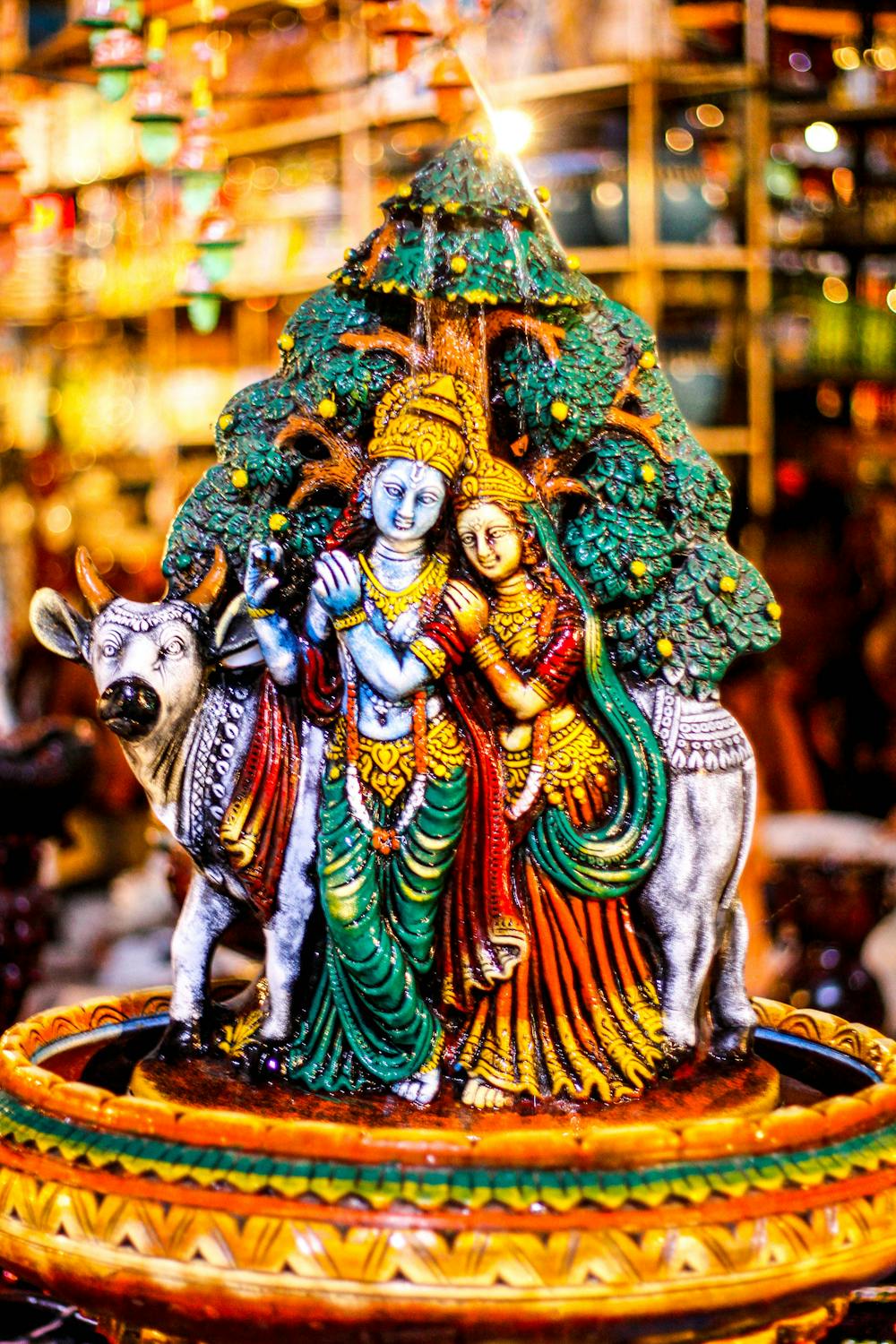The Portrayal of Dharma in the Mahabharata
The concept of Dharma in the Mahabharata is an everlasting theme. Dharma is something that occurs throughout the whole epic, and many other religious texts in Hinduism. dharma is everyone’s way of action, and the difference between right or wrong. The Mahabharata follows closely with this, as Dharma is one of the main reasons that the great war in the Mahabharata happened, as each side was trying to fight for what they thought was right, by following their Dharma.
What is Dharma?
Dharma is derived from the root word ‘Dhri’ or ‘dri’, which means to uphold. However, dharma has no English translation, so the closest there is, is doing the right thing, or as mentioned earlier, upholding good. It can also be seen as doing or completing your responsibilities, or simply just doing our part in society to create a better world. There is also another concept, called adharma. The word implies, it means “not dharma”. Adharma is any action that goes against the righteous actions of Dharma.
What is the Mahabharata?
The Mahabharata is an epic in Hinduism, which tells the story of the two groups of cousins, the Pandavas and the Kauravas, in the Kurukshetra war. It narrates the war itself, and the backstory behind many things. During the war, Arjuna no longer wanted to fight the war, because he would be fighting his own family. Krishna, as his charioteer, helped him overcome that fear. The words spoken between the two later became the Bhagavad Gita.
Dharma in the Mahabharata
In the Mahabharata, the word Dharma is mentioned quite frequently, generally used in the context of duty. Back in the times when the epic took place, the caste system of India was still present. All of the Pandavas and the Kauravas were warriors, or kshatriyas. Their duties were to govern the land, and to fight when required. But regardless of caste, everyone should be following their Dharma. Whether it be younger kids focusing on their studies and school, adults having a job and providing for their family, it’s always important to do what’s right.
In the context of the Mahabharata, we can take Yudhisthira as an example. Yudisthra was the eldest Pandava, which immediately made him a king. Therefore, his duty was to serve the people that he governed. However, at one point he wanted to retire from his position (this was before the war), and go live in the forest. However, he ended up not doing that, mainly because that wasn’t his duty, and duty was your Dharma.
The Comparison of Dharma in the Mahabharata and Ramayana
The tales of the characters in the Ramayana are something that every child listened to their parents and grandparents recite. The famous valors of Rama and Lakshmana are something that everyone has heard. The Ramayana is a book reciting a war against foreigners, and people of another species. The portrayal of good over evil is something that is clearly evident in the epic. The Mahabharata tells of a brutal civil war with no winner. The Ramayana doesn’t problematize Dharma, while the Mahabharata does.
Indian tradition puts the two poems into different categories. The Ramayana is the first poem, in the category of Kavya, and the Mahabharata is itihasa, which can be called a history or Dharma text. But, we cannot say that the Ramayana came first and when Dharma was still believed in, and the Mahabharata reconstructed those beliefs. But we also cannot say that the Mahabharata came first and looked disaster in the eyes, and the Ramayana cleaned that up. Both views exist simultaneously and in conversation, as can be seen. For example, the Mahabharata says, “Dharma is subtle,” and the Ramayana replies, “Yes, but not so subtle that it cannot be mastered by a perfect man like Rama.”
Both texts use a question to prompt the following story. The Ramayana started when Valmaki asked Sage Naruda, “if there was any man alive who has all the virtues”; to which the answer is the story of Rama. In contrast, the Mahabharata started by two requests from Yudisthra, when Draupadi was abducted, he asked if there was any man unluckier and unhappier than he is, he was told the story of Rama and Sita. Likewise, when he had gambled away everything, he asked the same question which is answered by the story of the gambler Nala.
How does Dharma relate to the Mahabharata?
When asked what the Mahabharata is about, some will say that it is about the Pandavas, others will say that it is about Krishna, but most will say that the Mahabharata is about Dharma. Multiple times throughout the book, when a character makes a choice that can be considered adharma, they will often be reminded about the subtlety of Dharma.
For example, we can take the story of the character Mandavya. Mandavya was a brahmin, who had taken a vow of silence. A group of robbers used to live in his house, and he had refused to break his vow of silence to tell the police where they were. When the police found the robbers hiding in his house, the king had passed judgement on the robbers as well as Mandavya; “kill him.” The executioners had placed the brahmin on the stake, but since the brahmin was the living example of Dharma, he remained on the stake for a very long time, and even though he had no food, he did not die. Soon the king came to him, asked for forgiveness, and set him free.
Although he was not able to get the stake out of the body, he cut it at the base and thought that it might prove useful. Later, Mandavya went to the house of Dharma, and asked what crime he had committed to having such a horrible punishment. Dharma responded by saying that it was because he used to stick pieces of grass in butterflies when he was a small child. Mandavya cursed him, due to the fact that he had to pay such a large price for a small mistake committed by a child. He stated that Dharma would be born as a man, in the womb of Shudra. He then said, “I will establish a moral boundary for the fruition of Dharma in the world: no sin will be counted against anyone until the age of fourteen”
Each of the characters in the Mahabharata, regardless of what side they were on, had a very strong sense of Dharma.
Bhishma
Bhishma is a character in the book that often displays selflessness. He gave up his birthright to the throne, only because of his father’s wishes to marry Satyavati. He promised that Satyavati’s children will inherit the throne, and not him. However, his wisdom and actions lose their shine when he does not do anything regarding Darupadi’s public humiliation in the assembly.
Arjuna
Arjuna is a beloved character in the Mahabharata, who faced an immense test of morals at the time of the war. Arjuna was afraid to fight against his own kin, which demonstrates his strong love for his family, even after everything that they put him and his brothers through. This later sparked the conversation between Krishna and Arjuna, that soon became the Bhagavad Gita.
Draupadi
As mentioned earlier under Bhishma, Draupadi had faced a great injustice in the assembly. Draupadi has a strong sense of justice, and holds herself to some very strong morals. When she was taken to the assemblage, Draupadi asked Yudisthra at the first chance she got, “who did you lose first, you or me?” Nobody dared to respond to that moral and legal question.
Yudisthra
In the Mahabharata, Yudisthra has discussed Dharma multiple times. After suffering both mentally and physically in exile, Draupadi spoke to him about Dharma. She said that Dharma does not protect him, Yudisthra replied with “I do not act for the sake of the fruits of Dharma, I act because I must….by its nature my mind is beholden to dharma”. This just shows that he acts not based upon what would be right, but what he should do, which is the right thing. It has also been said that Yudistira has been fathered by Dharma, which explains his character and his actions in the epic.
The Soul and the Self in Relation to Karma and Dharma
In order to talk about this, we must first understand karma. Karma is essentially a law applied to our actions and thoughts. It is the balance between righteous actions and thoughts, and things that may not be right or good. At the end of this life, your Karma decides your next life, so it can be considered something like fate. However, Karma should never be seen as a punishment. In the context of Dharma, dharma is above the wheel of karma. So when one is able to move past karma, they can then seek liberation through Dharma.
Conclusion
In conclusion, dharma is a reappearing theme in the Mahabharata. It has been demonstrated by several well known characters in the book, as well as something taught by multiple sages. It is the moral of many stories, and something to learn from. It is the topic of many conservations, and something well known to all. Dharma is something that applies to all human beings, and is something that we should live by. No action should be done only for doing Dharma, but all actions should be Dharma.

